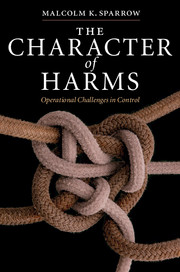9 - Conscious opponents
from Part II - Special categories of harms
Published online by Cambridge University Press: 06 July 2010
Summary
Much attention has been given to risks that emanate from natural or biological systems (as with diseases) or from complex technical systems (as with accidents and “manmade” disasters). The risk literature pays less attention to risks or harms emanating from the actions of enemies, criminals, or other classes of opponents, perhaps because these are to some degree less predictable or calculable based on prior experience and history.
This chapter examines harms that involve conscious opponents: that is, where a brain lies behind the harm. For these harms, the control task acquires the nature of a continuous, dynamic duel between those responsible for control and those opposed to it. The existence of a brain behind the harm introduces the possibility of deliberate adaptations designed to defeat or reduce the effectiveness of control interventions. It also transforms the analytic aspects of control operations into a game of intelligence and counter-intelligence.
The opponents might be drug smugglers, fraud perpetrators, thieves, terrorists, corrupt officials, poachers, illegal loggers, computer hackers, assassins, software pirates, or even students intent on cheating in examinations. All of these routinely assess the nature of controls in place, and develop novel methods to circumnavigate them. The more sophisticated criminal organizations alter their organizational forms as well as their operating methods in order to thwart the efforts of controlling authorities. Whether these opponents thrive or fail in their enterprise depends on the degree of creativity they bring to the task of thwarting authorities, and the adroitness of authorities in not being thwarted.
- Type
- Chapter
- Information
- The Character of HarmsOperational Challenges in Control, pp. 199 - 216Publisher: Cambridge University PressPrint publication year: 2008



